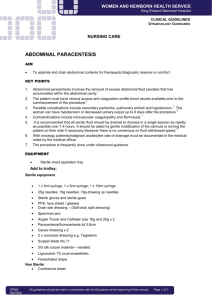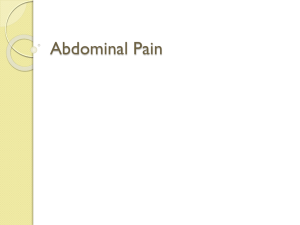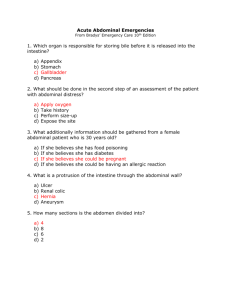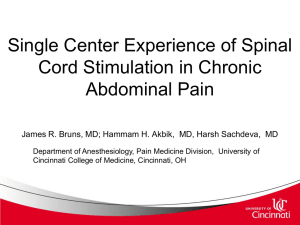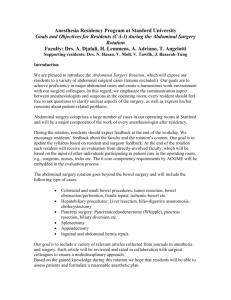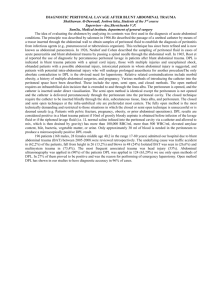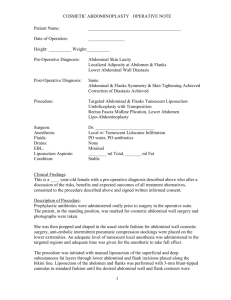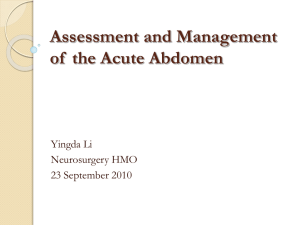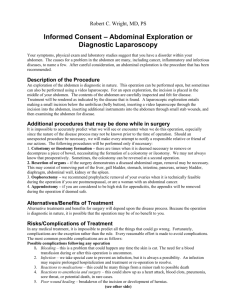Complications of Anastomosis & Resection
advertisement
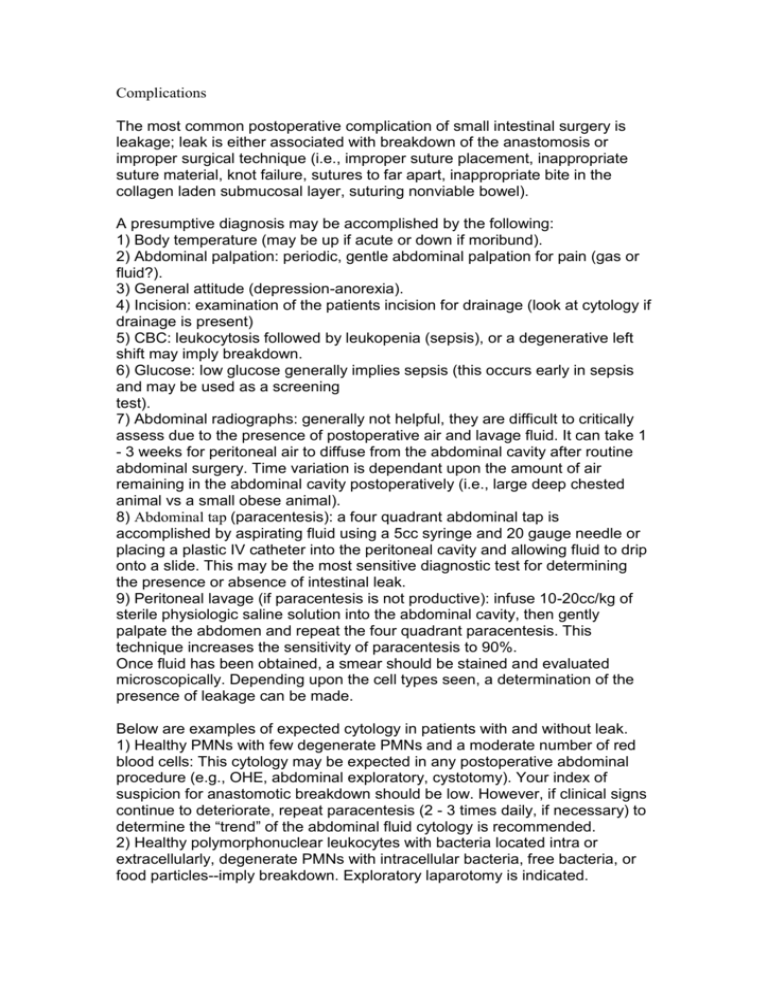
Complications The most common postoperative complication of small intestinal surgery is leakage; leak is either associated with breakdown of the anastomosis or improper surgical technique (i.e., improper suture placement, inappropriate suture material, knot failure, sutures to far apart, inappropriate bite in the collagen laden submucosal layer, suturing nonviable bowel). A presumptive diagnosis may be accomplished by the following: 1) Body temperature (may be up if acute or down if moribund). 2) Abdominal palpation: periodic, gentle abdominal palpation for pain (gas or fluid?). 3) General attitude (depression-anorexia). 4) Incision: examination of the patients incision for drainage (look at cytology if drainage is present) 5) CBC: leukocytosis followed by leukopenia (sepsis), or a degenerative left shift may imply breakdown. 6) Glucose: low glucose generally implies sepsis (this occurs early in sepsis and may be used as a screening test). 7) Abdominal radiographs: generally not helpful, they are difficult to critically assess due to the presence of postoperative air and lavage fluid. It can take 1 - 3 weeks for peritoneal air to diffuse from the abdominal cavity after routine abdominal surgery. Time variation is dependant upon the amount of air remaining in the abdominal cavity postoperatively (i.e., large deep chested animal vs a small obese animal). 8) Abdominal tap (paracentesis): a four quadrant abdominal tap is accomplished by aspirating fluid using a 5cc syringe and 20 gauge needle or placing a plastic IV catheter into the peritoneal cavity and allowing fluid to drip onto a slide. This may be the most sensitive diagnostic test for determining the presence or absence of intestinal leak. 9) Peritoneal lavage (if paracentesis is not productive): infuse 10-20cc/kg of sterile physiologic saline solution into the abdominal cavity, then gently palpate the abdomen and repeat the four quadrant paracentesis. This technique increases the sensitivity of paracentesis to 90%. Once fluid has been obtained, a smear should be stained and evaluated microscopically. Depending upon the cell types seen, a determination of the presence of leakage can be made. Below are examples of expected cytology in patients with and without leak. 1) Healthy PMNs with few degenerate PMNs and a moderate number of red blood cells: This cytology may be expected in any postoperative abdominal procedure (e.g., OHE, abdominal exploratory, cystotomy). Your index of suspicion for anastomotic breakdown should be low. However, if clinical signs continue to deteriorate, repeat paracentesis (2 - 3 times daily, if necessary) to determine the “trend” of the abdominal fluid cytology is recommended. 2) Healthy polymorphonuclear leukocytes with bacteria located intra or extracellularly, degenerate PMNs with intracellular bacteria, free bacteria, or food particles--imply breakdown. Exploratory laparotomy is indicated. In a recent morbidity/mortality study of patients undergoing intestinal surgery it was found that animals requiring a second abdominal surgery to treat intestinal disorders were less likely to survive than patients requiring only one laparotomy. Also, the longer it took to determine whether or not intestinal leakage had occured the less likely the patient would survive reoperation. The take home message is: pay attention to detail during the first surgery and if a leak occurs, diagnose it as soon as possible.
